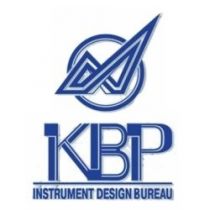Worldwide Airborne SATCOM Industry to 2027 - Strategic Recommendations for New Entrants
DUBLIN, Sept. 21, 2020 /PRNewswire/ -- The "Airborne SATCOM - Global Market Outlook (2018-2027)" report has been added to ResearchAndMarkets.com's offering.
https://mma.prnewswire.com/media/539438/Research_and_Markets_Logo.jpg
The Global Airborne SATCOM market accounted for $5.51 billion in 2018 and is expected to reach $9.80 billion by 2027 growing at a CAGR of 6.6% during the forecast period. Rise in long-haul flights and traveller traffic and raise in the number of high-throughput satellites are the major factors propelling the market growth. However, factors such as ultra-compact SATCOM terminals for tactical UAVs and need to improve passenger experience are hampering the market growth.
Airborne SATCOM series was a family of communications satellites formerly urbanized and operated by RCA American Communications. Satcom was individual of the early geostationary satellites; the first were the syncom series. Satcom was initial superseded and then replaced by the GE series of satellites. Satcom (which stands for "satellite communication") was an artificial geo-stationary satellite that facilitated wide-area telecommunications by receiving radio signals from Earth, amplifying them, and relaying them back down to terrestrial receivers.
Based on the installation, the new installation segment is likely to have a huge demand due to the use of advanced airborne SATCOM systems across commercial and military applications and growing demand for new commercial aircraft orders from Europe and Asia Pacific. Aircraft manufacturers and airlines across the globe are focusing on integrating newer generation airborne platforms to improve situational responsiveness and passenger experience.
By geography, Asia Pacific is going to have a lucrative growth during the forecast period due to the growth in passenger traffic has resulted in improved demand for new aircraft in the region. The aviation industry is mounting at a significant pace in the Asia Pacific region, due to the rising passenger traffic.
Some of the key players profiled in the Airborne SATCOM Market include Aselsan A.S., Astronics Corporation, Cobham PLC, Collins Aerospace, General Dynamics Corporation, Gilat Satellite Networks, Harris Corporation, Honeywell International Inc., Hughes Network System, Israel Aerospace Industries, Norsat International Inc, Orbit Communication System Ltd, Raytheon Company, Thales Group and Viasat, Inc.
What our report offers:
-- Market share assessments for the regional and country-level segments
-- Strategic recommendations for the new entrants
-- Covers Market data for the years 2017, 2018, 2019, 2023 and 2027
-- Market Trends (Drivers, Constraints, Opportunities, Threats, Challenges,
Investment Opportunities, and recommendations)
-- Strategic recommendations in key business segments based on the market
estimations
-- Competitive landscaping mapping the key common trends
-- Company profiling with detailed strategies, financials, and recent
developments
-- Supply chain trends mapping the latest technological advancements
Key Topics Covered:
1 Executive Summary
2 Preface
2.1 Abstract
2.2 Stake Holders
2.3 Research Scope
2.4 Research Methodology
2.4.1 Data Mining
2.4.2 Data Analysis
2.4.3 Data Validation
2.4.4 Research Approach
2.5 Research Sources
2.5.1 Primary Research Sources
2.5.2 Secondary Research Sources
2.5.3 Assumptions
3 Market Trend Analysis
3.1 Introduction
3.2 Drivers
3.3 Restraints
3.4 Opportunities
3.5 Threats
3.6 Application Analysis
3.7 Emerging Markets
3.8 Impact of COVID-19
4 Porters Five Force Analysis
4.1 Bargaining power of suppliers
4.2 Bargaining power of buyers
4.3 Threat of substitutes
4.4 Threat of new entrants
4.5 Competitive rivalry
5 Global Airborne SATCOM Market, By Installation
5.1 Introduction
5.2 Upgradation
5.3 New Installation
6 Global Airborne SATCOM Market, By Frequency
6.1 Introduction
6.2 C-band
6.3 Ka-band
6.4 Ku-band
6.5 L-band
6.6 S-band
6.7 UHF-band
6.8 X-band
7 Global Airborne SATCOM Market, By Platform
7.1 Introduction
7.2 Wide Body Aircraft (WBA)
7.3 Narrow Body Aircraft (NBA)
7.4 Commercial Aircraft
7.5 Regional Transport Aircraft (RTA)
7.6 Military Aircraft
7.6.1 Transport Aircraft
7.6.2 Combat Aircraft
7.7 Business Jets
7.8 Helicopters
7.8.1 Military
7.8.2 Commercial
7.9 Unmanned Aerial Vehicles (UAV)
7.9.1 Tactical UAVs
7.9.2 Small UAVs
7.9.3 Strategic UAVs
7.9.3.1 High-Altitude Long Endurance (HALE) UAVs
7.9.3.2 Medium-Altitude Long Endurance (MALE) UAVs
7.9.4 Special-purpose UAVs
8 Global Airborne SATCOM Market, By Component
8.1 Introduction
8.2 SATCOM Terminals
8.2.1 Antenna Subsystems
8.2.1.1 Stabilize Antenna Pedestals
8.2.1.2 Antenna Control Units
8.2.2 Antennas
8.2.2.1 Tail-Mount Antennas
8.2.2.2 FAslage-Mount Antennas
8.2.3 Networking Data Units
8.2.4 Radio Frequency Units
8.3 Transceivers
8.3.1 Transmitters
8.3.2 Receivers
8.3.2.1 High-Power Amplifiers
8.3.2.2 Block Upconverters
8.4 SATCOM Radomes
8.5 Modems & Routers
8.6 Airborne Radio
9 Global Airborne SATCOM Market, By Application
9.1 Introduction
9.2 Government & Defense
9.2.1 Border Protection & Surveillance
9.2.2 Command, Control & Communications On-the-Move
9.2.3 Emergency Response & Public Safety
9.2.4 ISR Missions
9.3 Commercial
9.3.1 In-flight Connectivity
9.3.2 Real-time Data Gathering
9.3.3 Telemedicine
10 Global Airborne SATCOM Market, By Geography
10.1 Introduction
10.2 North America
10.2.1 US
10.2.2 Canada
10.2.3 Mexico
10.3 Europe
10.3.1 Germany
10.3.2 UK
10.3.3 Italy
10.3.4 France
10.3.5 Spain
10.3.6 Rest of Europe
10.4 Asia Pacific
10.4.1 Japan
10.4.2 China
10.4.3 India
10.4.4 Australia
10.4.5 New Zealand
10.4.6 South Korea
10.4.7 Rest of Asia Pacific
10.5 South America
10.5.1 Argentina
10.5.2 Brazil
10.5.3 Chile
10.5.4 Rest of South America
10.6 Middle East & Africa
10.6.1 Saudi Arabia
10.6.2 UAE
10.6.3 Qatar
10.6.4 South Africa
10.6.5 Rest of Middle East & Africa
11 Key Developments
11.1 Agreements, Partnerships, Collaborations and Joint Ventures
11.2 Acquisitions & Mergers
11.3 New Product Launch
11.4 Expansions
11.5 Other Key Strategies
12 Company Profiling
12.1 Aselsan A.S.
12.2 Astronics Corporation
12.3 Cobham PLC
12.4 Collins Aerospace
12.5 General Dynamics Corporation
12.6 Gilat Satellite Networks
12.7 Harris Corporation
12.8 Honeywell International Inc.
12.9 Hughes Network System
12.10 Israel Aerospace Industries
12.11 Norsat International Inc
12.12 Orbit Communication System Ltd
12.13 Raytheon Company
12.14 Thales Group
12.15 Viasat, Inc
For more information about this report visit https://www.researchandmarkets.com/r/8d31d2
Research and Markets also offers Custom Research services providing focused, comprehensive and tailored research.
Media Contact:
Research and Markets
Laura Wood, Senior Manager
press@researchandmarkets.com
For E.S.T Office Hours Call +1-917-300-0470
For U.S./CAN Toll Free Call +1-800-526-8630
For GMT Office Hours Call +353-1-416-8900
U.S. Fax: 646-607-1907
Fax (outside U.S.): +353-1-481-1716
View original content:http://www.prnewswire.com/news-releases/worldwide-airborne-satcom-industry-to-2027---strategic-recommendations-for-new-entrants-301134588.html
SOURCE Research and Markets




